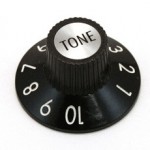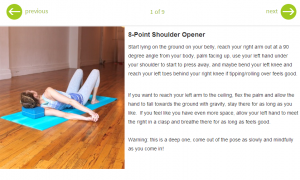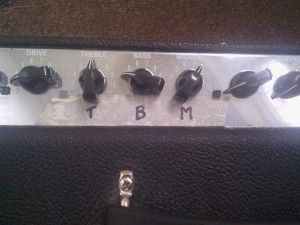 Finding our tone is a process of elimination in small incremental steps, trying to remove things that do not please our ears and trying to improve the signal path with better materials or with things that more please our ears. At the time of writing I am playing around 200 gigs a year, and every time I try to see if there is a better way to do things.
Finding our tone is a process of elimination in small incremental steps, trying to remove things that do not please our ears and trying to improve the signal path with better materials or with things that more please our ears. At the time of writing I am playing around 200 gigs a year, and every time I try to see if there is a better way to do things.
To follow, a series of keywords to keep in mind when trying to improve your tone.
Signal Path:
Hand (touch, weight of the picking stroke, way you hold the pick)
I tend to use a lighter touch, letting the amp do the work. Obviously this is genre specific, if you play metal you might want to grip the pick and hit the strings harder. Try and experiment with making the picking motion with your fingers, wrist, forearm or entire arm and notice the difference.
Pick (thickness, material, shape of edge)
I did a video on this a while ago: https://www.giannichiarello.com/using-different-guitar-picks/
In general I use the same picks during live gigs for consistency, but to record (especially pop) I tend to find the right pick for the job.
Strings (material, round/flat, thickness, tension)
this is where things start go get a bit complicated as choice of strings don’t only have to do with tone, but with budget and how easy they are to find…when I was touring and travelling a lot I stuck for a long time (and still use) D’Addario 10’s as they seemed the only set that I could find everywhere in the world (including small villages in the Caribbean when I used to play on cruise ships!).
Wood (Lighter to heavier)
A general rule of thumb is that the lighter coloured the wood, the brighter (and snappier) the sound. Maple fret boards/ash bodies will give you a hollow and bright sound, as opposite to Mahogany and Rosewood fretboard that will give you more punch, body and a darker tone.
Hardware (bridge, nut, hight and type of frets, pegs)
Frets are vital for sustain and they are so important for the choice of the right instrument. In general high frets (jumbo) are great as they allow less of the string/finger to touch the wood on the fretboard and make bending easier. Having said that lower frets are great for jazz as they allow smoother slides.
Check out this video from Paul Reed Smith:http://www.youtube.com/watch?v=EzKT8WrZhhc
I am not a fan of carbon fibre hardware as it seems to dull the sound for me, but if you have issues with breaking strings they seem to save the day. Bone nut seems to be the favourite of most guitarists but there are alternative materials that do just as well, if you don’t play 15 hours a day.
Pickups (if any, output, magnet type)
Possibly the first port of call if you want to improve or change your tone is changing pickups…having said that, I always urge to try and set them up first and try to get them closer or further from the strings. Most times that is enough to add more bass/treble or output to the signal chain. I always try to do this live if I can…carry a small screw driver and try to tweak the hight as you play a real gig…obviously don’t get caught doing it!
Electronics (active, passive, caps)
Try and get the best quality potentiometers and caps in your guitar. I have noticed a noticeable jump in quality by doing that, and in durability. Keep a can of contacts cleaning fluid to keep things working as they should. There are also some tricks to keep the tone from getting dull when the volume is not all the way up: http://www.youtube.com/watch?v=e0SLdOWvz3c
Quality and type of Cables/Wireless
Just like for stings picking cables have a lot to do with quality, budget and durability. I always use braided cables as they don’t tangle up (reducing setup time) and make the cable last a lot longer. Not always the more expensive the cable is, the better it sounds. Try and use correct lengths…if you are doing a restaurant gig don’t use a 50ft cable…and try not to bring a 3ft cable for a area tour. Tone changes with a longer cable.
Pedals (how many, True bypass/Buffer, paraller/serial,switching system)
I could write a whole book on this…my experience is to try and find the right solution for the gig. At a small gig/recording session try to bring what you need, and if you build a pedal board my personal suggestion is to use true bypass loops/switching system with possibly a switch-able buffer (sometimes I find they change the dry tone too much). Believe the hype: if a lot of guitarists use a specific pedal, go and try it…it will probably sound good.
Amp Sections (Power soak?)
Usually an amp that is built for early break up, does not have much headroom. Consider using a power soak. To me a good amp is quite true to the sound of the guitar you are using, and makes it sound just louder. I try to avoid using the send/return section as I find changes the sound. Also I try to cut on the EQ section (unless the guitar I am using is really weak), as that usually allows me to turn up the volume and get more in the ‘sweet spot’ zone of the amp.
Speaker Selection
Changing the speaker makes such a massive difference in your tone, and alongside changing pickups it is the most common upgrade. Try and find comparisons online and take your pick! http://www.youtube.com/watch?v=jWK0sa7tlfI
Keep everything in top conditions! Old strings, dirty cable connections, loose solder joints…technical problems happen, but there is no excuse for negligence. Obviously the first thing is ‘brain/ears’: do we know what tone we want? I find that is the biggest issue sometimes. Can you ‘hear’ the tone you want in your head?
I hope this helped, good luck!
Suggested reading:













